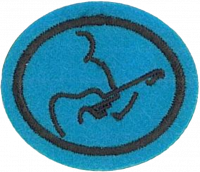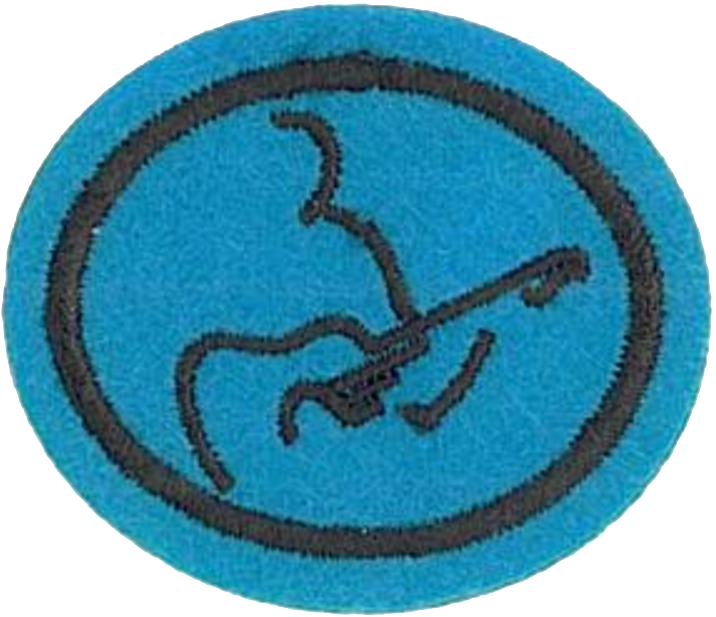|
|
| (One intermediate revision by the same user not shown) |
| Line 27: |
Line 27: |
| | {{clear}} | | {{clear}} |
| | | | |
| − | <div lang="en" dir="ltr" class="mw-content-ltr">
| + | {{clear}} |
| − | '''Classical Guitar:'''
| |
| − | Classical guitars are very similar to acoustic guitars but there are some differences. Classical guitars or flamenco guitars use nylon strings. Also, the body tends to be smaller than most acoustic guitars and the neck is thicker. The nylon strings on these guitars give an overall warmer sound than acoustic and electric guitars. This makes it ideal for classical guitar and jazz.
| |
| − | </div>
| |
| | | | |
| | <noinclude></noinclude> | | <noinclude></noinclude> |
| Line 80: |
Line 77: |
| | {{clear}} | | {{clear}} |
| | | | |
| − | <div lang="en" dir="ltr" class="mw-content-ltr">
| + | {{clear}} |
| − | '''Standing:''' When standing the strap should be adjusted so that the guitar is around waist level. The neck should be pointing up.
| |
| − | </div>
| |
| | | | |
| | <noinclude></noinclude> | | <noinclude></noinclude> |
| Line 96: |
Line 91: |
| | <!-- 7. En la afinación estándar, ¿las seis cuerdas en una guitarra son asociadas con cuáles notas? --> | | <!-- 7. En la afinación estándar, ¿las seis cuerdas en una guitarra son asociadas con cuáles notas? --> |
| | | | |
| − | <div lang="en" dir="ltr" class="mw-content-ltr">
| + | {{clear}} |
| − | On a piano keyboard your high E string is the E just above middle C with your low E being two octaves below that.
| |
| − | </div>
| |
| | | | |
| | <noinclude></noinclude> | | <noinclude></noinclude> |
| Line 112: |
Line 105: |
| | {{clear}} | | {{clear}} |
| | | | |
| − | <div lang="en" dir="ltr" class="mw-content-ltr">
| + | {{clear}} |
| − | To make build the C major chord we would use C, which is the first note, E, the third note, and G, the fifth note. So if we wanted to play a C chord we need to hit these three notes. An open C chord is played like so:
| |
| − | </div>
| |
| | | | |
| − | <div lang="en" dir="ltr" class="mw-content-ltr">
| + | {{clear}} |
| − | e||-0--- <== This is an 'E'
| |
| − | B||-1--- <== This is a 'C'
| |
| − | G||-0--- <== This is a 'G'
| |
| − | D||-2--- <== This is an 'E'
| |
| − | A||-3--- <== This is a 'C'
| |
| − | E||-X--- <== This string is not played in an open C chord.
| |
| − | </div>
| |
| | | | |
| − | <div lang="en" dir="ltr" class="mw-content-ltr">
| + | {{clear}} |
| − | To make a C minor chord we use the same scale but the third note is flat. In the case of the C major chord, we used 'C', 'E', 'G'. To make it a minor chord we would use 'C', 'Eb', and 'G'. One way to play this chord is:
| |
| − | </div>
| |
| | | | |
| − | <div lang="en" dir="ltr" class="mw-content-ltr">
| + | {{clear}} |
| − | e||-3--- <== This is an 'G'
| |
| − | B||-4--- <== This is a 'Eb'
| |
| − | G||-5--- <== This is a 'C'
| |
| − | D||-5--- <== This is an 'G'
| |
| − | A||-3--- <== This is a 'C'
| |
| − | E||-X--- <== This string is not played in an open C chord.
| |
| − | </div>
| |
| | | | |
| − | <div lang="en" dir="ltr" class="mw-content-ltr">
| + | {{clear}} |
| − | It should be noted that because of the way the guitar fretboard is built there are many ways, voicings, to play the same chord.
| |
| − | </div>
| |
| | | | |
| | | | |
| − | <div lang="en" dir="ltr" class="mw-content-ltr">
| + | {{clear}} |
| − | '''CAGED Method'''
| |
| − | </div>
| |
| | | | |
| − | <div lang="en" dir="ltr" class="mw-content-ltr">
| + | {{clear}} |
| − | Another thing that should be noted is because of the way the fretboard is built, chord shapes can be moved. This i an easy way to find all the major and minor chords without necessarily memorizing all the chords. There are three requirements for this: 1. know a little bit of music theory, 2. now the basic chord shapes, and 3. know how to play bar chords.
| |
| − | </div>
| |
| | | | |
| − | <div lang="en" dir="ltr" class="mw-content-ltr">
| + | {{clear}} |
| − | When you bar a chord it is like you are using a capo or moving the nut, essentially changing the pitch of that note or chord. Because of this, you can build a chord using only the root note and the basic chord shapes. For example, this is an 'E' major chord:
| |
| − | </div>
| |
| | | | |
| − | <div lang="en" dir="ltr" class="mw-content-ltr">
| + | {{clear}} |
| − | e||-0---
| |
| − | B||-0--- This is the "E major" shape
| |
| − | G||-1---
| |
| − | D||-2---
| |
| − | A||-2---
| |
| − | E||-0--- <== Using this method we only look at the root.
| |
| − | </div>
| |
| | | | |
| − | <div lang="en" dir="ltr" class="mw-content-ltr">
| + | {{clear}} |
| − | In this case the root note is "E". Before we start building chords we first have to see how the fretboard is organized. On the fretboard, the notes are in half step intervals. Since the root note is on the low E string in the "E" shape, if we learn the notes on the "E" string, we can use the E shape to find the chord.
| |
| − | This is the low E string:
| |
| − | E||-F-|-F#-|-G-|-G#-|-A-|-A#-|-B-|-C-|-C#-|-D-|-D#-|-E-|
| |
| − | 0 1 2 3 4 5 6 7 8 9 10 11 12
| |
| − |
| |
| − | *''The numbers are the frets.''
| |
| − | **''Note that there is a half step between E and F and between B and C
| |
| − | So to find a chord we simply find the root note and play the shape. For example, if you wanted to play a G# major chord, you would bar on the 4th fret and play an "E" shape like so:
| |
| − | e||-4---
| |
| − | B||-4--- This is the "E major" shape
| |
| − | G||-5---
| |
| − | D||-6---
| |
| − | A||-6---
| |
| − | E||-4--- <== The root note is G#
| |
| − | </div>
| |
| | | | |
| − | <div lang="en" dir="ltr" class="mw-content-ltr">
| + | {{clear}} |
| − | The same can be done with the "E minor" shape. This is the "E minor" shape:
| |
| − | e||-0---
| |
| − | B||-0--- This is the "E major" shape
| |
| − | G||-0---
| |
| − | D||-2---
| |
| − | A||-2---
| |
| − | E||-0--- <== Using this method we only look at the root.
| |
| − | So to play a G# minor we would again bar the 4th fret and apply the "E minor" shape like so:
| |
| − | e||-4---
| |
| − | B||-4--- This is the "E minor" shape
| |
| − | G||-4---
| |
| − | D||-6---
| |
| − | A||-6---
| |
| − | E||-4--- <== The root note is G#
| |
| − | </div>
| |
| | | | |
| − | <div lang="en" dir="ltr" class="mw-content-ltr">
| + | {{clear}} |
| − | This can be done with all the basic Chord shapes: C, A, G, E, and D. This is one of the reasons it is called the CAGED method. This is however a very broad topic and guitarist are encourage to find out more on their own or through a tutor.
| |
| − | </div>
| |
| | | | |
| | <noinclude></noinclude> | | <noinclude></noinclude> |
| Line 225: |
Line 153: |
| | {{CloseReq}} <!-- 10 --> | | {{CloseReq}} <!-- 10 --> |
| | {{ansreq|page={{#titleparts:{{PAGENAME}}|2|1}}|num=11}} | | {{ansreq|page={{#titleparts:{{PAGENAME}}|2|1}}|num=11}} |
| − | <noinclude><div lang="en" dir="ltr" class="mw-content-ltr"> | + | <noinclude></noinclude> |
| − | </noinclude> | + | <!-- 11. Describir la diferencia entre las cuerdas de nylon y acero, y explicar su preferencia por una de ellas. --> |
| − | <!-- 11. Describe the difference between nylon and steel stringing, and explain the reason behind your preference. --> | |
| − | </div>
| |
| | | | |
| | {{clear}} | | {{clear}} |
| | | | |
| − | <div lang="en" dir="ltr" class="mw-content-ltr">
| + | {{clear}} |
| − | '''Steel:''' Steel strings can be made using many different materials. Some of the most common are steel and brass. When you buy steel strings they come in gauges rather then tensions. For example, you can get a set where the high E string is 0.09mm or 0.10 mm. The bigger the gauge the better the sound. However, increasing the gauge also makes it harder to play. While nylon strings are warm, steel strings tend to be very bright, and have less pronounced bass notes. This makes them good for most styles of music, and thus they are more versatile than nylon strings.
| |
| − | </div>
| |
| | | | |
| | <noinclude></noinclude> | | <noinclude></noinclude> |


